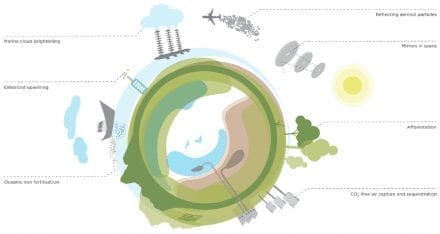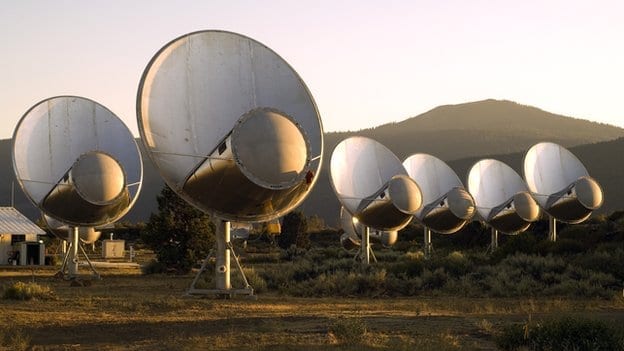
The new method has the potential to reduce the costs of long-distance optical fibre communications as signals wouldn’t need to be electronically boosted on their journey, which is important when the cables are buried underground or at the bottom of the ocean.
As the technique can correct the transmitted data if they are corrupted or distorted on the journey, it could also help to increase the useful capacity of fibres. This is done right at the end of the link, at the receiver, without having to introduce new components within the link itself. Increasing capacity in this way is important as optical fibres carry 99% of all data and demand is rising with increased use of the internet, which can’t be matched by the fibres’ current capacity, and changing the receivers is far cheaper and easier than re-laying cables.
To cope with this increased demand, more information is being sent using the existing fibre infrastructure with different frequencies of light creating the data signals. The large number of light signals being sent can interact with each other and distort, causing the data to be received with errors.
The study, published in Scientific Reports today and sponsored by the EPSRC, reports a new way of improving the transmission distance, by undoing the interactions that occur between different optical channels as they travel side-by-side over an optical cable.
One of the biggest global challenges we face is how to maintain communications with demand for the Internet booming – overcoming the capacity limits of optical fibres cables is a large part of solving that problem.
Professor Polina Bayvel
Study author Dr Robert Maher (UCL Electronic & Electrical Engineering), said: “By eliminating the interactions between the optical channels, we are able to double the distance signals can be transmitted error-free, from 3190km to 5890km, which is the largest increase ever reported for this system architecture. The challenge is to devise a technique to simultaneously capture a group of optical channels, known as a super-channel, with a single receiver. This allows us to undo the distortion by sending the data channels back on a virtual digital journey at the same time.”
Read more: New technique doubles the distance of optical fibre communications
The Latest on: Optical fibre communications
[google_news title=”” keyword=”Optical fibre communications” num_posts=”10″ blurb_length=”0″ show_thumb=”left”]
via Google News
The Latest on: Optical fibre communications
- Hello, AT&T fiber-optic internet, good-bye to Comcast’s cable service?on April 27, 2024 at 4:00 am
AT&T began installing fiber in Houston nine years ago, but there are still big chunks of the area that don’t yet have it.
- Critical Frequency Design developing military laser communications at new Melbourne HQon April 26, 2024 at 2:26 am
Critical Frequency Design of Melbourne now contracts with the U.S. Army, Air Force, Navy, Northrop Grumman and defense contractors.
- Single Mode Optical Fiber Market Upward Trajectory Unveiled Market Size’s Skyrocketing Potentialon April 25, 2024 at 1:20 pm
Single Mode Optical Fiber Market is valued approximately USD 3705.09 Billion in 2019 and is anticipated to grow with a healthy growth rate of more than 10.80% over the forecast period 2019-2026.
- Frontier Communications Cyber Attack Shuts Down Systems, Leaks Personal Dataon April 25, 2024 at 9:00 am
A cyber attack by a suspected cybercrime group has forced Frontier Communications, a Dallas, Texas-based optic-fiber Internet provider, to temporarily shut down its information systems to contain the ...
- Promising perspectives for the application of SDS Optic’s inPROBE technology platform for protein expression determinationon April 25, 2024 at 5:25 am
Traditional methods such as immunohistochemistry and fluorescence in situ hybridization depend on subjective assessment of tissue samples, sometimes leading to imprecise results. This can result in ...
- Fiber-Optic Break Severs Cell, Internet in Northern Alaskaon April 24, 2024 at 3:32 pm
A cable break roughly 40 miles west of Prudhoe Bay Tuesday disrupted Internet and cell service for residents in several northern Alaska communities. Service was temporarily restored but it’s unclear ...
- Fiber: The Key to Unlocking Tomorrow’s Energy Gridon April 24, 2024 at 2:27 pm
Tim Harris and Tim Lawter, ENTRUST Solutions, USA, explain how fiber will enhance, and bring synergy to, the renewable energy mix of the future.
- Philippine govt launches Phase 1 of National Fibre Backboneon April 21, 2024 at 11:47 pm
The Philippine government launched the first phase of its National Fibre Backbone (NFB) project on Friday, which it says will boost the country’s economy as well as its digital ambitions.
- Optical Fiber and Plastic Conduit Market Segmentation Synergy Unlocking Precision in Market Targetingon April 21, 2024 at 8:28 pm
Report Ocean recently added a research report on “Optical Fiber and Plastic Conduit Market”. The report includes an extensive analysis of the market’s characteristics, COVID-19 impact, size and growth ...
- Cut fiber-optic cable leads to 911 outage in Nebraska Wednesdayon April 18, 2024 at 7:02 am
The outage began when a contractor was installing a light pole and cut a fiber-optic cable owned by telecommunications company and 911 service infrastructure provider Lumen in the ...
via Bing News










